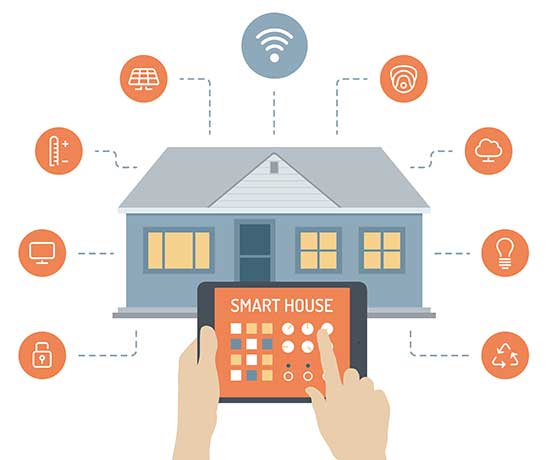The Internet of Things (IoT) has gained a lot of traction in the recent years, which isn’t really surprising since the technology that supports it has rapidly developed. Over the years, IoT has grabbed the attention of not just tech enthusiasts but also of ordinary people who want to save time and money, enjoy more comfort, and make their lives better.
If you’re interested in IoT, here are some of the recent trends that you should know about:

Smart homes
Many homeowners have become interested in modernizing their homes through IoT technology, which can greatly help in maintaining safety and security and increasing convenience and comfort. Retail giant Amazon, for example, has introduced its virtual assistant Alexa and released open software called the Smart Home Skill API. This API will creates a standard that manufacturers of smart lights, switches, and thermostats should follow, ensuring that their devices can easily be controlled by consumers through Alexa.
Some real estate developers are even taking the game a step further by constructing smart homes. Developer Qingjian, for example, is set to build The Visionaire, an executive condominium in Singapore that will come with built-in smart lock systems and smart household appliances.
However, the IoT for homes has recently come under fire when Nest (the popular home automation company that’s owned by Alphabet, which also owns Google) announced that it will shut down the Revolv smart home hub in May 2016. Nest acquired Revolv in 2014 and immediately stopped selling the hub, and it notified users in February that it would shut down the cloud service that supports the Revolv hub. Many users expressed outrage over this, pointing out how people can shell out big bucks over “smart” home devices — only to find that the gadgets no longer work after a few months or years.
Modern healthcare
The Internet of Things has revolutionized healthcare in different ways. On a personal level, wearables that are powered by IoT technology allow users to track the number of steps they take, the number of miles they run, and the amount of calories they burn when performing a certain activity. These devices also allow users to monitor their sleeping patterns and see how long and how well they sleep. People can then use these information to swap bad habits with good ones and take steps to improve their health and fitness.
IoT technology can also help healthcare providers by making it easy for them to monitor their patients and ensure they’re in good shape. Smart pocket electrocardiograms, for instance, allow patients to take ECGs anytime and anywhere and share these information with their doctors in real time. “Smart” patient badges allow healthcare staff to track their patients’ activity levels and prevent patients from wandering out of the facility, while “smart” staff badges allow hospital employees to easily communicate with one another and maintain smooth work flow.
Final Thoughts
IoT technology is here to stay, and it’s safe to assume that it will keep on getting better as time passes by. It’s up to people to integrate it in their daily lives and to businesses and organizations to use it in their line of work.
Reference
http://techcrunch.com/2016/03/29/whats-trending-in-the-iot-space/
Sorry, the comment form is closed at this time.